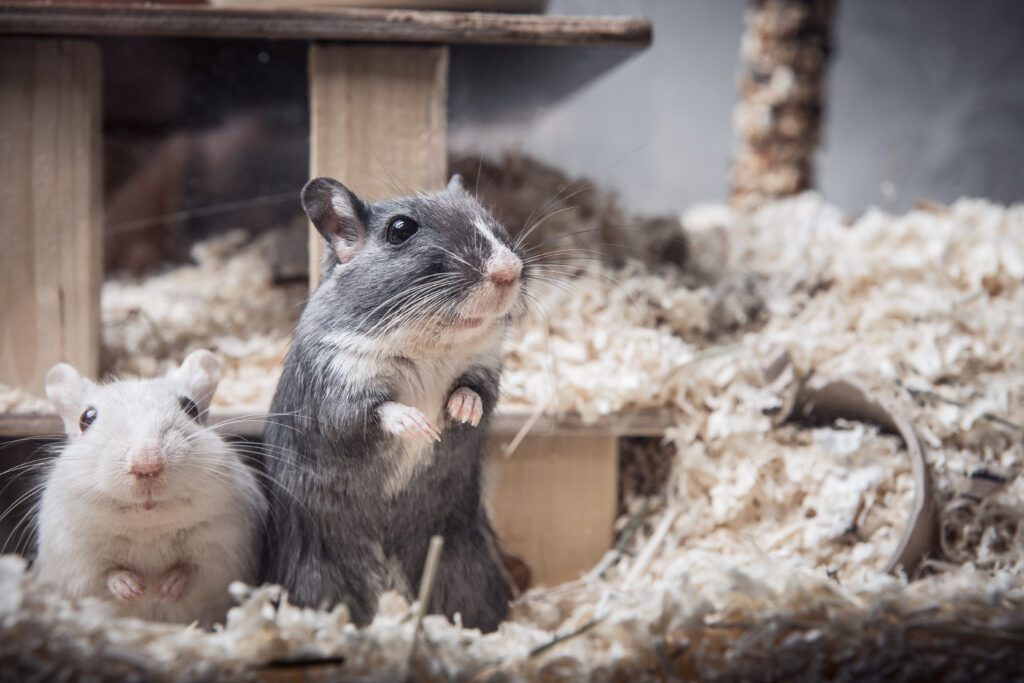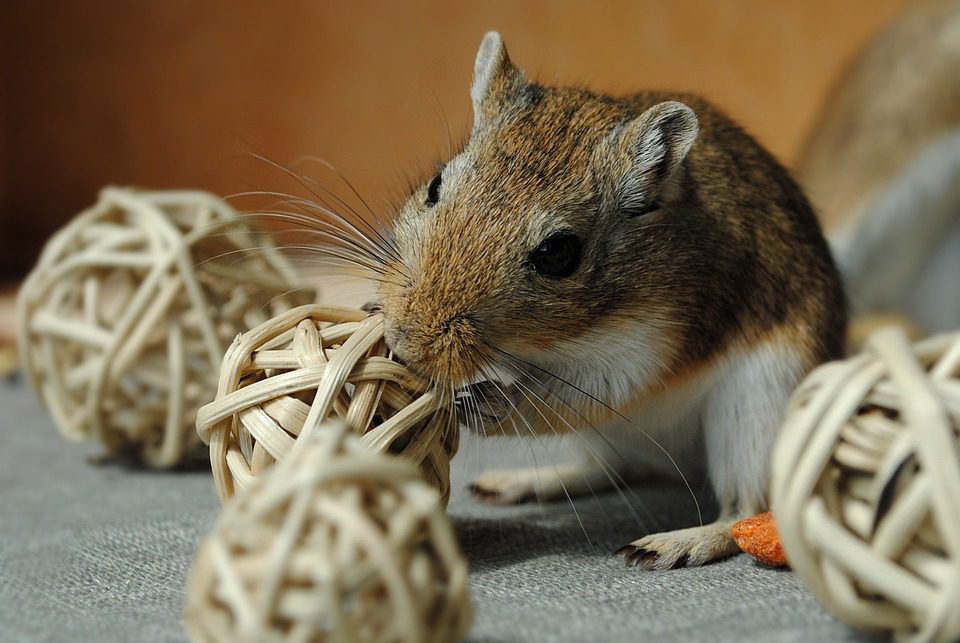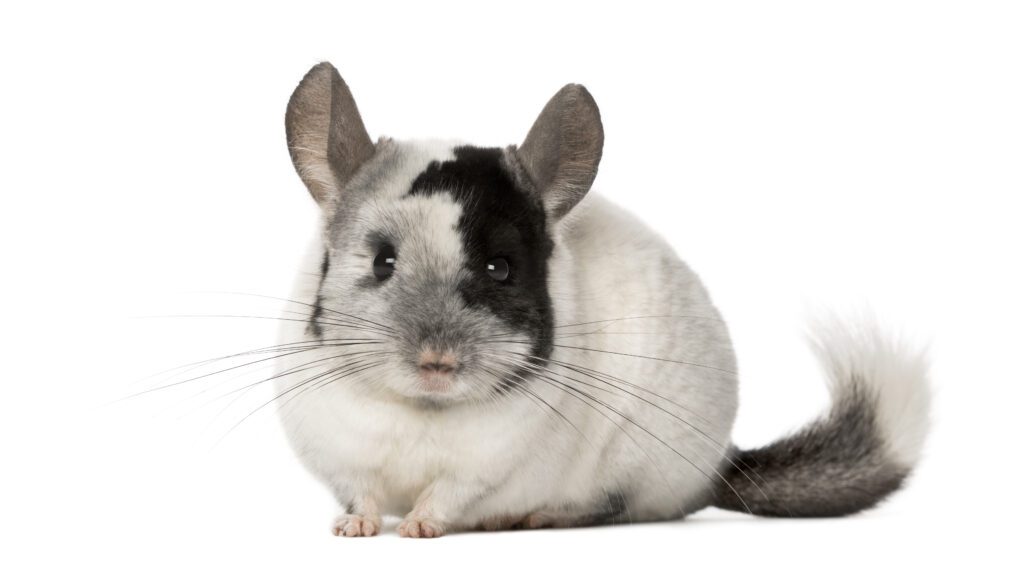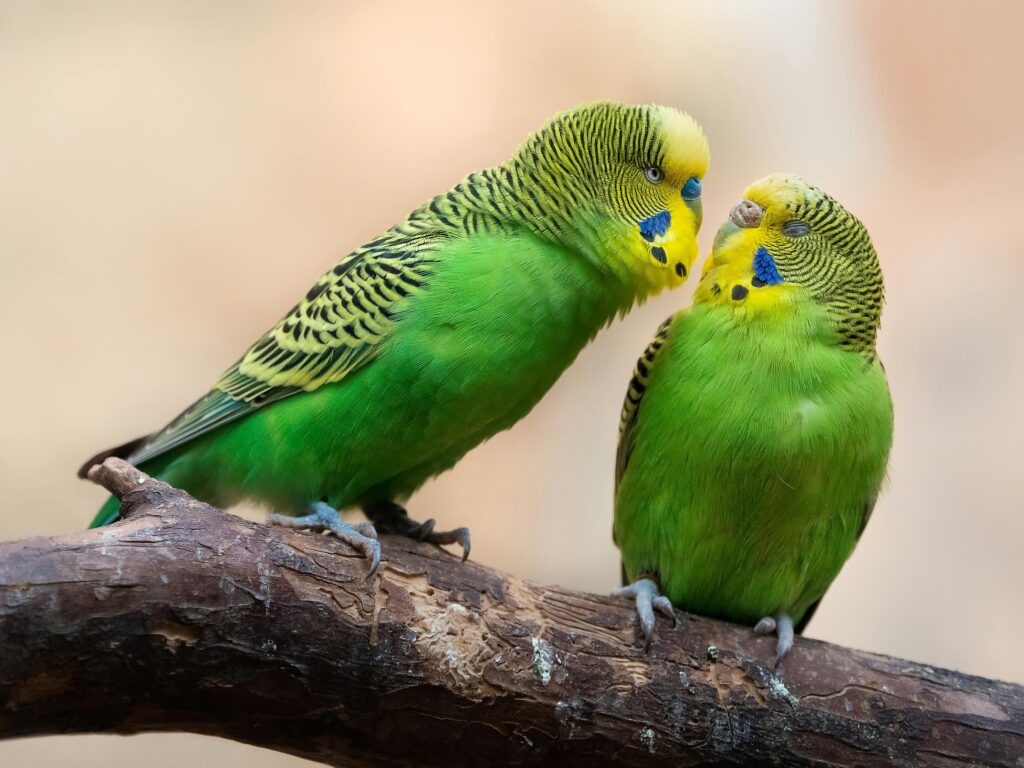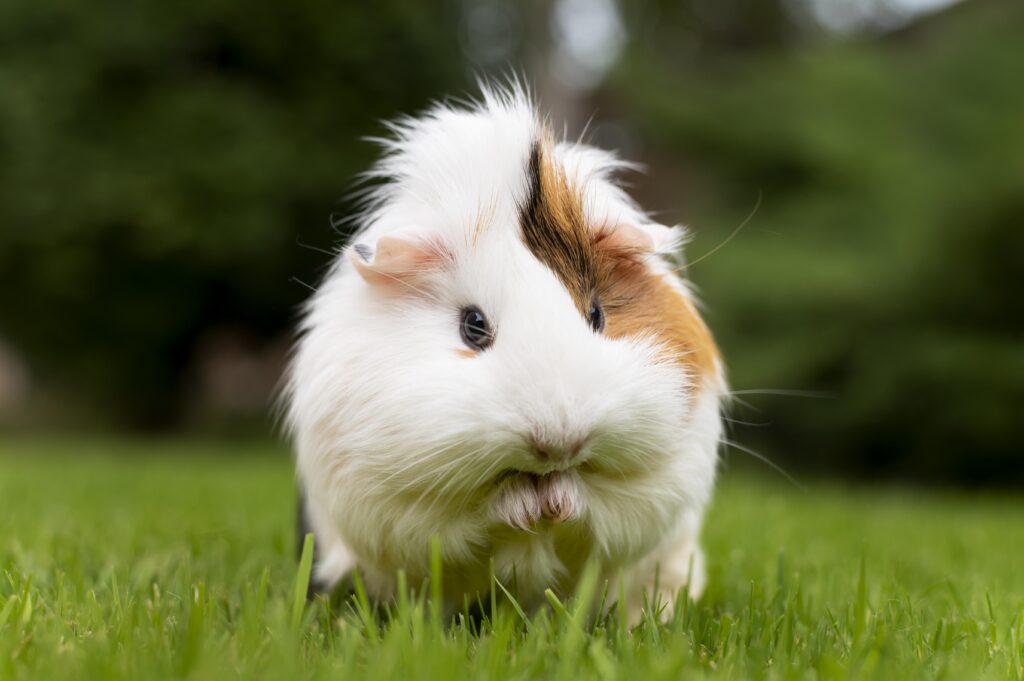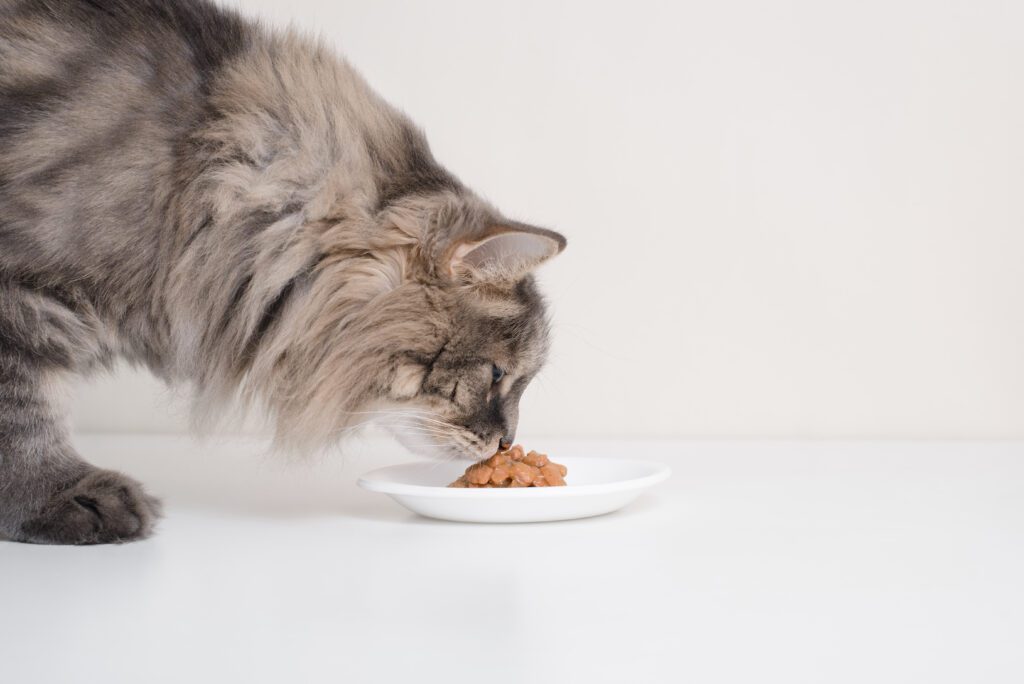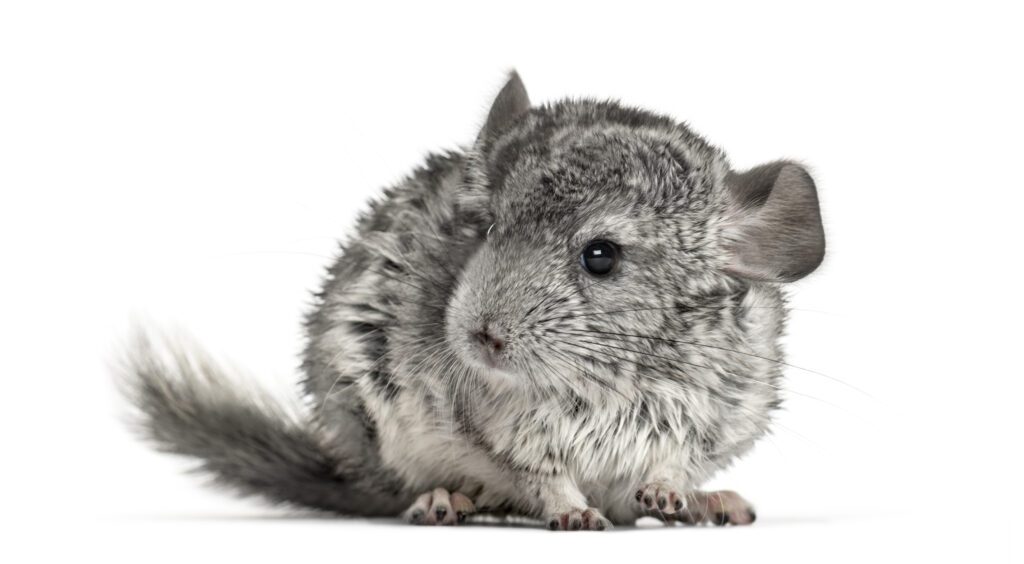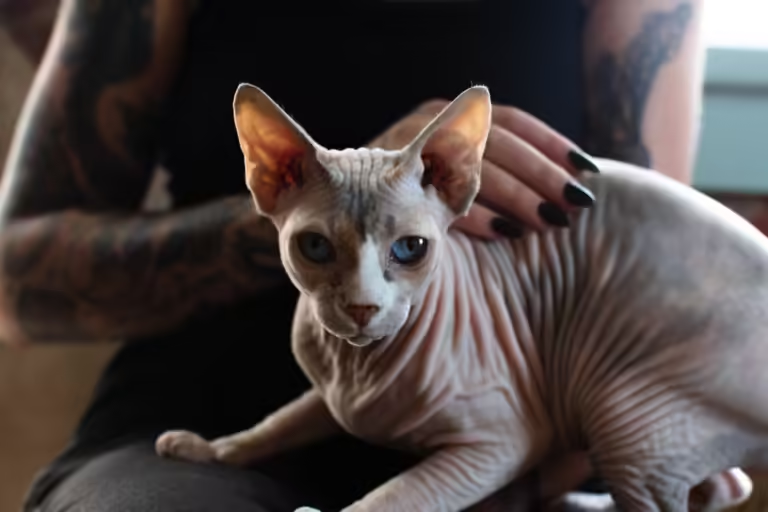
7 Best Hairless Cats You Must Fall In Love With
Learn about Seven Types of Hairless Cats. Discover seven types of hairless cats, their unique features, and personalities.
Get to know How to Care for a Hairless Cat.
Introduction to Hairless Cats
Hairless cats are like no other animals on earth, and they make up for their lack of fur with charm. Their hairless look could result from a natural genetic bad luck, and many different species of them have developed through the ages. The cats have a great deal of affection for us, are quite playful with us, and love to be the focus of our attention.
What is a Hairless Cat?
A hairless Cat is a particular kind of cat that lacks a coat or has a very scanty coat because of genetic mutation. Their skin can be sleek and plush, similar to velvet or smooth leather. As there is no fur on their bodies, these cats are very affectionate and they rely on humans for warmth.
Sphynx, Donskoy, and Peterbald are some examples of popular hairless cat breeds. To get rid of excess sebum, they need extra attention including regular bathing, moisturizing, and sunblock application.
When it comes to cold weather, hairless felines are more susceptible hence they tend to snuggle for heat. Their distinct look combined with playful personalities makes them an attractive option for people in search of loving and faithful pets.
The top 5 benefits of having a cat
- Cats are great companions: A cat can provide you even constant companionship and emotional support for their existence, perhaps loneliness may be eradicated and, at the same time, a purpose be gained. They are also intuitive to the owner’s needs, comforting, and affectionate. Too, they add depth to your day-to-day existence, an enrichment that fosters deep bonding between humans and animals.
- Cats reduce loneliness: A cat is the ultimate companion, I suppose: it reduces loneliness by much, especially with interactive behaviors of purring and snuggling to help create comfort around them. Cats are uncompromisingly companion-like, and that makes them perfect for people who live alone or someone who need much more social interaction – their constant affection helps fill out the emotional gaps.
- Cats teach you to love unconditionally: Cats show unconditional love in their affectionate behaviors and loyalty. A bond without judgment makes owners learn the pure, selfless love of cats. This breeds knowledge towards deeper gratitude and empathy through emotional openness, changing and improving relationships, and personal growth through uncompromising and judgment-free companionship.
- Cats improve your physical health: Having a cat is a great way to improve your physical health, such as lowering blood pressure and preventing heart diseases. The calm attitude of a cat may make it possible for stress-related symptoms to be reduced thus promoting calmness. Increased levels of well-being and decreased cortisol levels have been associated with frequent contact, like stroking.
- Cats relieve stress and anxiety: Numerous studies indicate that cats can soothe and relax humans due to their purring sound and calm nature. In addition, when one caresses the skin of a cat, endorphins are let off into the bloodstream which results in lowered tension levels. They have a soothing impact which aids in emotional equilibrium and comforting regimens that assist with tackling daily stressors and anxiety.
Seven types of Hairless cats
Here are descriptions of seven types of hairless cats:
1. Peterbald
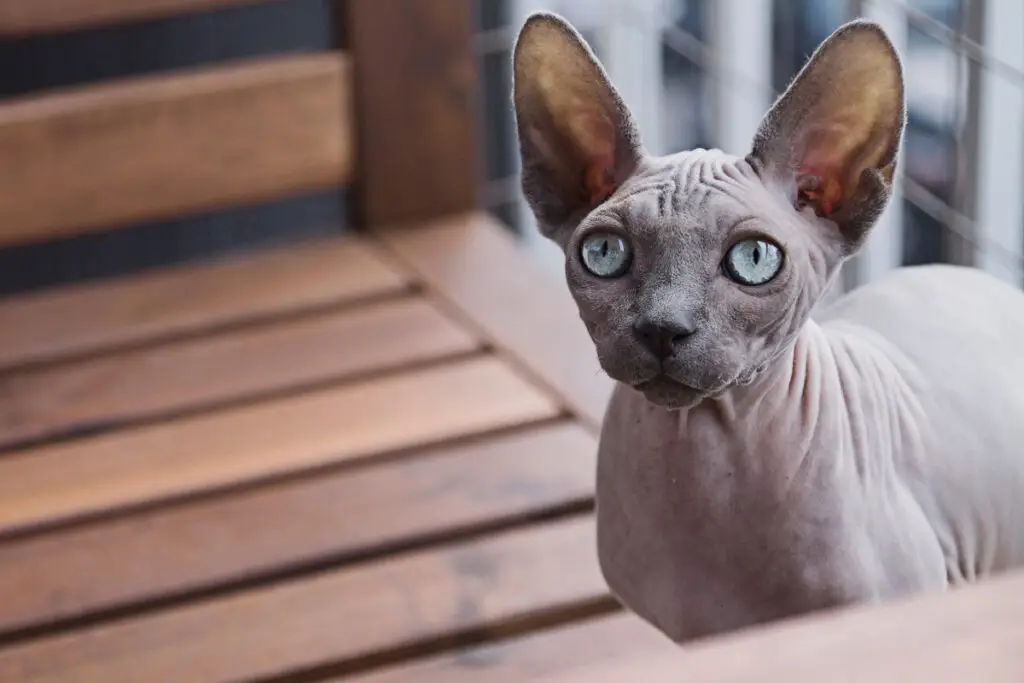
TOPICS COVERED
TogglePeterbald is a fashionable and elegant cat breed that originated in Russia in the 1990s. It is distinguished by its hairlessness and may have various skin textures from entirely hairless to velvety touch.
This breed is known for its affectionate, curious, and playful nature, forming strong bonds with its human companions. Their skin requires regular care to avoid oil buildup. They are also recognized for their long, slender bodies, and large, bat-like ears.
2. Donskoy
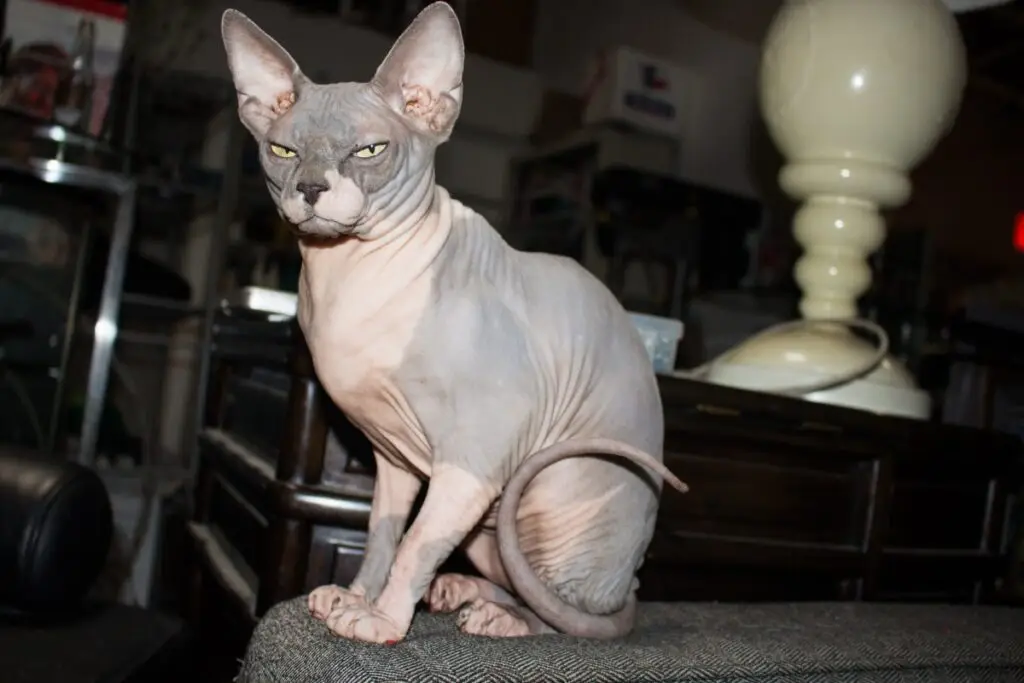
Donskoy is a different breed of Russian hairless cat that was found in 1987. Unlike other cats with no fur, their baldness is caused by a dominant gene. A few Donskoy have fur when they’re born but lose it as time goes on.
These are strong feline animals with medium-sized bodies and wrinkled skin. Donskoy is a kind and outgoing feline who often develops profound bonds with their humans. Clean skin and the absence of excess sebum are achieved through regular washing.
3. Ukrainian Levkoy
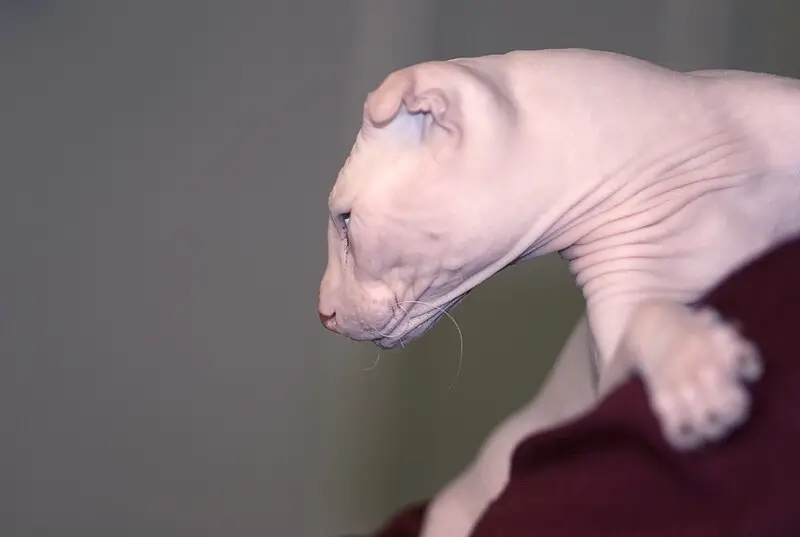
Photo: Nickolas Titkov
The Ukrainian Levkoy is a genuine breed, distinctive for its hairlessness and folded ears. Its body is slim yet muscular with a slightly wrinkled appearance. Generally, Ukrainian Levkoys are friendly, socializing feline companions who love human company. Letting go of the tough appearances, they exhibit tenderness and love. They do fine with different kinds of pets and require skin care practices regularly because the absence of their fur demands special care.
4. Bambino
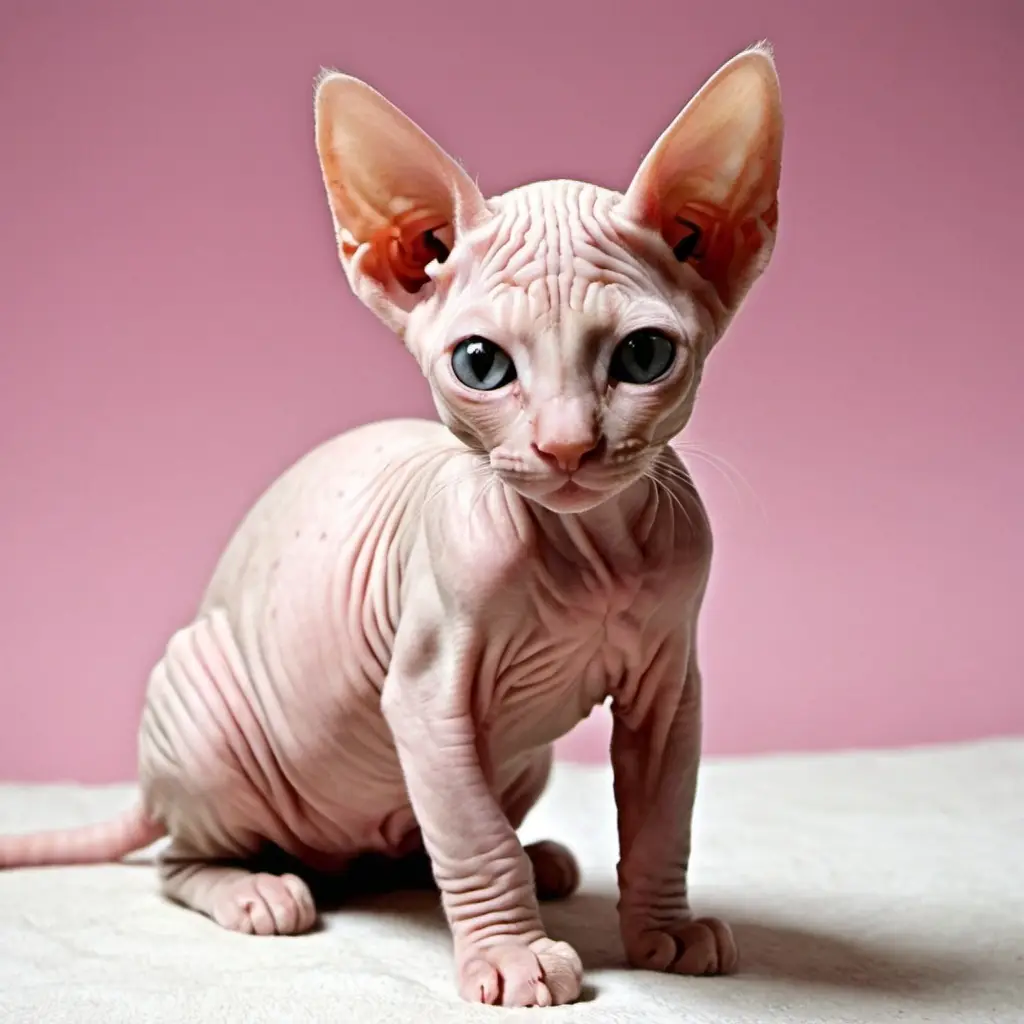
There is a small, dwarf-like bald cat, cut named the Bambino, bred by crossing Sphynx with Munchkin breeds. Its short legs and wrinkled skin set it apart from other breeds. The lively temperament of this breed makes it playful and loving.
These small dogs are very sociable dogs that like to interact with people, making them good friends. Their tiny size and unique appearance make them quite famous, however, they require frequent grooming to avoid irritation or accumulation of dirt as they lack hair.
5. Elf Cat
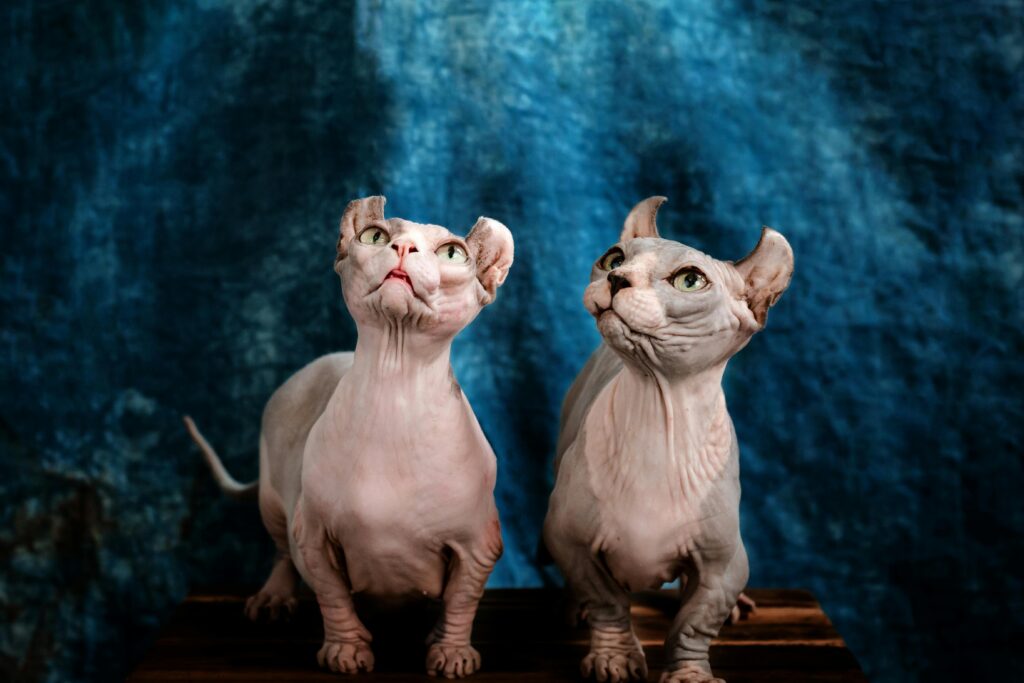
The Elf Cat is an emerging breed of cat characterized by being hairless and having uniquely bent ears. This special appearance comes about because of the mating between Sphynx and American Curl breeds. Elf Cats are famous for being lively, inquisitive creatures who have a strong bond with their people.
Because they don’t have any furs, their skins need constant scrubbing so as not to become dirty. They also tend to be sociable and loving animals making them good friends for those who prefer playful pets with them.
6. Lykoi
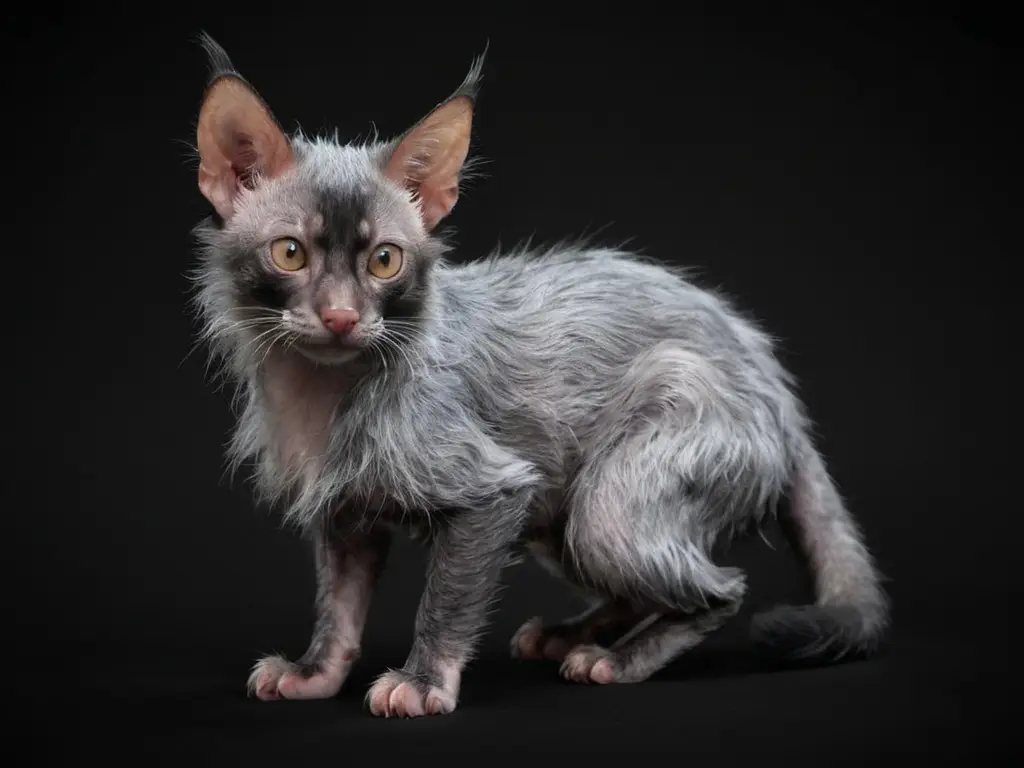
The Lykoi is often regarded as one of the unusual breeds of hairless cats because it has a minimal amount of thin hair that gives it an appearance to look like a werewolf, though it is not a hairless breed in its entirety. This breed emerged naturally through domestic short-haired felines.
The Lykoi have a very high intelligence, playfulness, and sociality but they are still partially independent creatures. Despite being sparse, it requires frequent grooming while its bare skin can be sensitive and needs to be treated gently to avoid irritation.
7. Sphynx
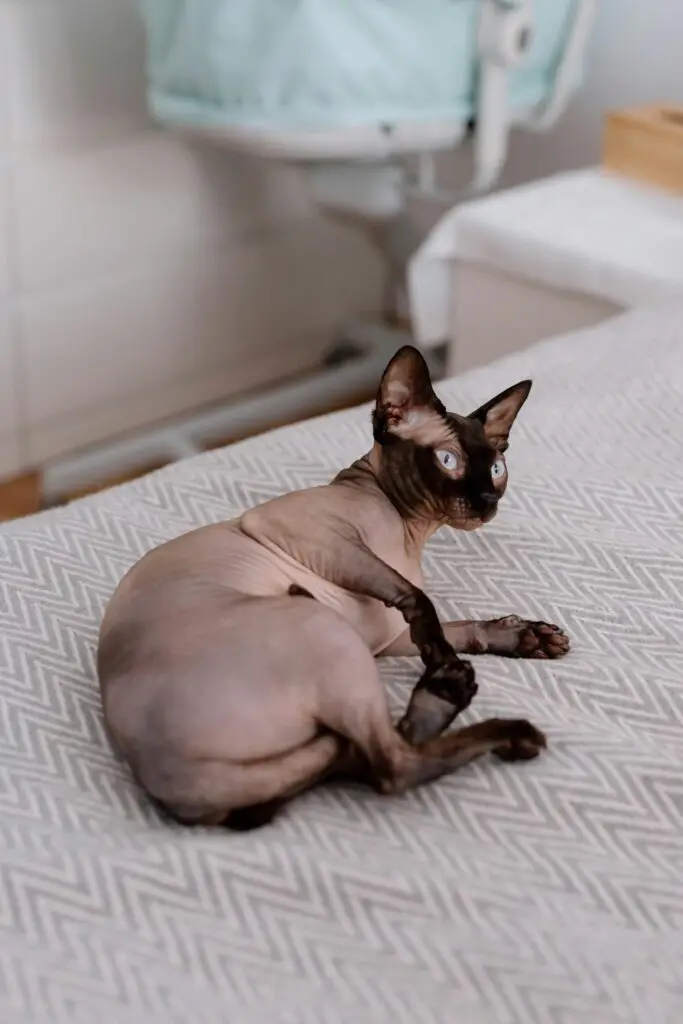
The Sphinx is maybe the most observed among the breeds of cats that have no fur. The breed originated in Canada during the 1960s and has been known for its baldness and overt emotions. Sociable by nature, Sphynx cats like to be warm and with people.
Lacking hair, they require frequent grooming to prevent oil from accumulating on their skin. They are also characterized by big, expressive eyes and energetic personalities that make them a popular favorite of cat enthusiasts.
Features of Peterbald
Smooth and pretty, Peterbald differs in skin texture from being completely bald to having a velvety texture. Large, pointed ears and a lean body characterize this medium-sized breed.
They’re emotionally supportive and bright; they have close relationships with their owners. The skin needs regular care to curb oil accumulation and ensure cleanliness.
Features of Donskoy
The Donskoy thanks to the dominant gene is muscular and medium-sized with either a full bald coat or a partially bald one. The skin is wrinkled while the eyes are very expressive.
Highly amiable and gregarious, this species has formed very tight links with mankind. To keep their skin clean, bathing regularly helps maintain skin oils.
Features of Ukrainian Levkoy
Seemingly slim and sporty, the Ukrainian Levkoy is a hairless animal characterized by its unique folded ears. Its body is well-designed and has an average size.
A being that is compassionate and sociable, relishes the company of people and other animals as well. To avoid episodes of itching and keep the skin healthy, it is necessary to do consistent care for the skin.
Features of Bambino
A short-legged, hairless, or partially hairless cat that looks like a small dwarf is called the Bambino. It is characterized by a muscular which has some folds of skin.
This breed loves and interacts playfully with humans. To help manage the excess oil buildup and avoid getting skin problems require regular skin care.
Features of Elf Cat
An Elf Cat has no hair and ears curled backward that define it. It is a slim body type which gives it an elegant look with slight wrinkles on its surface.
Playtime is loved and humans like being around it as it is always happy and inquisitive. To maintain its cleanliness and lack of oils, frequent washes are a requirement.
Features of Lykoi
The Lykoi, which has a distinctive werewolf-like look due to its thin and irregular coat, is famous for such characteristics. It’s a medium-sized breed with a strong physique and may possess some bare patches on its body.
Smart and fun-loving, it is also autonomous. Frequently done grooming and skin care will help in maintaining the exposed skin thus preventing any form of irritation.
How to Care for a Hairless Cat?
1. Keeping Your Hairless Cat’s Skin Healthy
Hairless cats have exposed skin which requires regular care. Wash them every 1-2 weeks with a mild cat shampoo, to get rid of excess oils and avoid skin problems. Check the skin for any dryness or irritation if present apply a suitable moisturizer. Regular washes aid in the upkeep of their skin’s health and comfort.
2. Keeping Nails Clipped
Hairless cats should have their nails cut to avoid overgrowth and discomfort which might affect them. Nail trimming for cats should be done utilizing clippers designed for this purpose and at intervals of one to two weeks. Avoid cutting cuticles, with touch bleeding pain. For feline comfort, regular clipping is essential to ward off injuries.
3. Keeping Your Hairless Cat Warm
Hairless cats’ low Furness makes them cold which is why they are sensitive to temperatures’ low levels. Therefore, give them warm bedding and make certain to shelter them from drafts. Besides, keeping these animals comfy during the chilly seasons may imply wearing cat sweaters or providing them with heated pet beds.
4. Hairless Cats Make Great Companions
The loveable and friendly character of hairless cats is known all over the world. The cats will come closer to people all the time and like being held or taking part in some games with their owners.
They are good companions due to their playful personality and close relationship with their masters. Any home can find happiness through their uncommon looks and affectionate nature.
FAQs
Are hairless cats good pets?
Yes, hairless cats are very affectionate and social. They love attention from humans and remain involved in whatever activity the family is doing. They also are very playful and full of energy, so they make great companions. Their unusual looks apart, they are friendly and loving and tend to thrive in almost all settings.
Do hairless cats have special health needs?
Hairless cats are mostly prone to dryness, oily buildup, and irritation on their skin. Their skin needs proper care through regular bathing and moisturizing. Furthermore, they must be shielded from extreme temperatures and the requirements and medical conditions might bring greater demands on their food.
Do hairless cats need special food?
There is no particular food that hairless cats need, yet they thrive on food that supports their skin health. The skin and general health of a cat can be kept at their best by giving it high-quality cat food enriched with important fatty acids and other nutrients. Consult a veterinarian for dietary recommendations that are personalized.
How much do hairless cats cost?
The prices of the Sphinx breed that are hairless cats usually vary from about $1,000 to nearly $3,000. This could be due to their reputations amongst breeders, bloodlines, or even where they are situated. Apart from the upfront cost, think about continued expenses on grooming, healthcare, and upkeep.
Are hairless cats friendly?
In general, hairless cats tend to be quite amicable and warm-hearted creatures. They’re usually gregarious pets who love mingling with people and often become emotionally attached to their human caregivers.
Their exuberance and mischief are such as to make them outstanding buddies. As they typically ask for notice and hugs, they serve as perfect family pets or ones for single individuals.
Do hairless cats get cold easily?
Without a doubt, since hairless cats are more sensitive to temperature changes compared to other breeds, they may feel cold more easily. Therefore, it is essential to provide them with warm places such as blankets and also heated beds.
Conclusion
Hairless cats are exclusive, friendly, and gratifying animals for a suitable household. Even though they do not have any hair, their loveable character makes them an excellent companion for every home. If you are looking for a friendly pet that does not inflame allergies and loves being held then perhaps you should check out the hairless cats.

